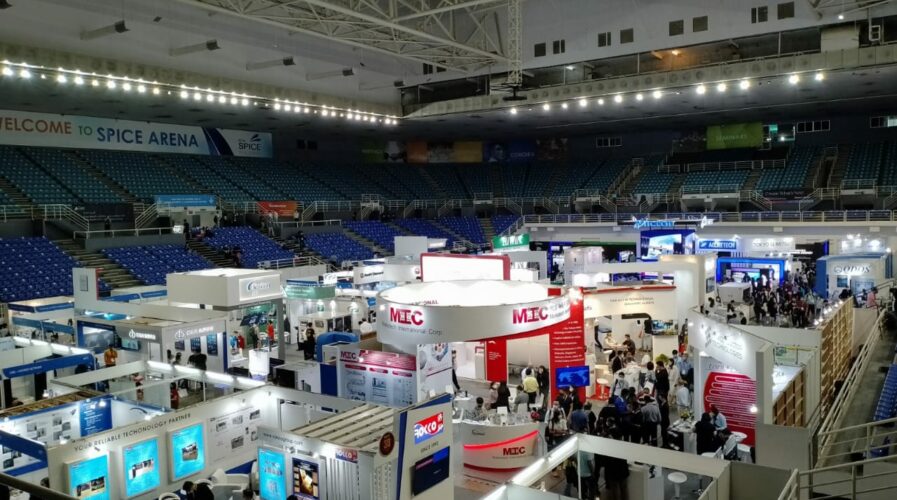
Chip shortage: The lack of “chips to make chips” is exacerbating the shortage by another 2 years.Source: TWA
Chip shortage: The lack of “chips to make chips” is exacerbating the shortage by another 2 years
- The global industry association reckons that the chip shortage will last “at least until the end of next year”, after which the market would have to balance the supply and demand.
- SEMI’s President also reckons that it is critical to ensure chips for semiconductor manufacturing equipment needed to expand capacity.
- Average lead time for equipment manufacturers has increased from three to four months to 10-12 months.
- A total of 92 fabs are in the pipeline globally, until 2024, and oversupply is ‘definitely a concern’, a SEMI’s expert shared.
For a brief moment between the end of last year and the beginning of this year, it felt like the worst was over with the global chip shortage. After all, with all the facility expansions and ramping up of production, the supply and demand would inevitably balance out. But then geopolitical tensions broke out, a new Covid variant came, causing another wave of cases and lockdowns, and the supply chain were choked again. Now, we have 92 fabs in the pipeline, with insufficient chips for manufacturing equipment needed to expand capacity.
The result of that? Another two years of chip shortage, longer lead times, and plenty of supply and demand balancing to do. SEMI, a global association of companies involved in the electronics design and manufacturing supply chain, believes that the lack of semiconductor which was initially triggered by the pandemic, has now turned more complicated due to the lack of tools required to make chips.
President and CEO Ajit Monacha described the ongoing issue as complex, emphasizing that the recovery will have to start by addressing the toolmakers of these chips. “Now, we are faced with a bigger problem where toolmakers need chips to help grow their capacity. They need chips to make more chips,” he told reporters during the SEMICON Southeast Asia 2022 held at Penang, Malaysia.
Worse yet, the unsettled Russia-Ukrainian conflict is adding “more fuel to the fire”, Ajit described, mainly because the materials needed from Ukraine, such as neon and palladium, among others, cannot be sourced as much elsewhere. Russia controls as much as 44% of the global palladium supplies, while Ukraine produces a significant 70 % of the global supply of neon — two necessary raw materials needed for chip making.
For contact, these chips are necessary in almost all other industries from automobiles to mobile phones, consumer electronics and many others. As such, Ajit who currently sees no backup plan from the industry, believes that any backup nevertheless will take months to kick in.
So many fabs, so little chips
During a presentation at the SEMICON gathering, Ajit shared that there are currently 92 new fabrication plants expected to be operational worldwide in the next few years, mainly to cater to surging demand for semiconductors. Considering how those plants will take years of building before it goes up and running, Ajit doesn’t see the chip shortage easing before that.
He highlighted that the primary concern for the industry is still the lack of chips necessary for toolmakers to manufacture chip making machines. “We now need chips to make chips and we have been leading the call for the industry to prioritize toolmakers,” he said. “The fundamental problem of (the) capacity issue is to get tools and (for) tools, they need chips to make multiple chips,” he added.
In short, Ajit reckons that players within the supply chain would have to come together to solve the conundrum. “What we are doing to help at SEMI is to try to bring the entire value chain together, to create awareness, to encourage information sharing where we can be transparent with each other so the problem can be solved. This will keep people moving forward with what they need,” he said.
While many experts had previously forecasted the supply situation to have gradually improved this year, geopolitical situations brought another blow to the industry. Now, even semiconductor players don’t see the situation easing anytime soon — mostly until 2024. For Ajit, by 2024, with more capacities, the players will finally be able to balance the supply to the mounting demand.
From chip shortage to oversupply?
Data compiled by SEMI that shows the 92 total fabs between 2020-2024 comprises 200mm and 300mm fabs. For 200mm, 25 fabs and expansions are expected; five in America, three Europe/Mideast and 17 in Asia. With 300mm, there are 67 fabs (new and expansions) expected, whereas seven are in the US, eight in Europe/Mideast, and 52 in Asia.
Considering that the chip industry is a cyclical sector, the current period of consistent shortages suggests there will be a period of oversupply at some point in the future, SEMI’s VP of the corporate marketing and market intelligence groups Sanjay Malhotra highlighted. Speaking to Tech Wire Asia on the sidelines of SEMICON SEA 2022, Sanjay said “an oversupply is inevitable, the smarter ones would switch off (expansion), and balancing will occur.
SEMI estimated in June last year that construction on close to 30 new fabs will start by the end of 2022. In September it predicted global semiconductor equipment investment for front-end fabs, where the silicon wafers are processed, will be nearly US$100 billion next year, after topping US$90 billion in 2022– both records.
This will mark a “rare three consecutive years of growth that began in 2020, bucking the historical cyclical trend of a one- or two-year expansion followed by a year or two of tepid growth or declines,” SEMI said.
On top of the unprecedented confidence to expand capacity, governments around the world have committed to spend billions of dollars to expand semiconductor production within their own borders — measures designed to protect against supply chain disruptions like those caused by the pandemic, and to reduce reliance on production in Taiwan.
Asia remains the key
Deloitte in a report has highlighted how Asia Pacific is the world’s biggest market for semiconductors, accounting for 60% of global semiconductor sales. “Driven by government support, vast market and increasing R&D spending, China, Japan, South Korea and Taiwan together have become the “Big 4” semiconductor players in Asia Pacific, holding four of the top six spots by overall semiconductor and each having several global semiconductor giants.”
Malaysia, where SEMICON Southeast Asia took place this year, performs many “back-end” operations such as chip packaging and testing. The region’s premier gathering of the semiconductor and microelectronics industry, underscores the significance of the Electrical and Electronics (E&E) industry both in Malaysia and the broader SEA region.
Malaysia’s semiconductor industry is mostly concentrated in an island-state, Penang, which is also dubbed the Silicon Valley of the East. To put into context the significance, Penang, which represents 80% of the nation’s contribution to global backend semiconductor output, has also accounted for over 5% of the world’s semiconductor sales over the last few years, according to Malaysian Investment Development Authority (MIDA).
Themed “Forward as One — Building A Resilient and Sustainable Electronics Supply Chain in Southeast Asia”, the three-day event that took place last week brought together industry experts for critical insights into the semiconductor ecosystem, new business opportunities and collaboration. It was attended also by all kinds of players in the industry like Micron, Western Digital, Global Foundries, Applied Materials, Intel, and many others.
Drawing more than 10,000 attendees, SEMICON Southeast Asia hosted the two themed pavilions, two global pavilions, keynote presentations and a host of technology forums, addressing key trends and issues in the electronics manufacturing supply chain. Industry experts also discussed Malaysia’s role in the semiconductor’s supply chain in conjunction with the country’s 50th anniversary of its electric and electronic industry.
Taking into account how the semiconductor industry is one of the most resource-intensive in the world, sustainability topics occupied a fair bit of the three-date gathering. Industry experts discussed practices to reduce the environmental impact of their businesses and manufacturing operations.Interestingly, more semiconductor players are seeing the importance of improving the energy efficiency of chipmaking equipment, considering how expansions are moving at a rapid phase.
READ MORE
- 3 Steps to Successfully Automate Copilot for Microsoft 365 Implementation
- Trustworthy AI – the Promise of Enterprise-Friendly Generative Machine Learning with Dell and NVIDIA
- Strategies for Democratizing GenAI
- The criticality of endpoint management in cybersecurity and operations
- Ethical AI: The renewed importance of safeguarding data and customer privacy in Generative AI applications


